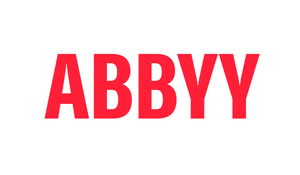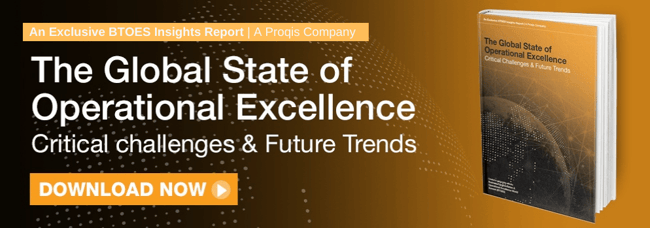












































Four fail-proof factors for a successful Hybrid Work Model
A hybrid working environment is now on the table for most U.S. companies, with many starting to draw up new strategies for combing remote and office workers. However, this may require more thought than meets the eye and leaders need to develop an approach that includes the critical step of developing a workplace technology roadmap that can handle the various unique needs of employees working in different places.
Some business leaders are still dealing with poor decisions they made last year when the pandemic forced them to quickly introduce new digital processes, which mostly turned out to be inadequate or didn’t live up to expectations. In fact, a survey by ABBYY of 4,000 WFH employees showed as many as 74% experienced challenges such as not having the right IT tools. This supports the fact that employees value the option to work away from the office, as long as they’re equipped to do so efficiently.
If businesses get it right, the hybrid model has significant benefits, including a decrease in office costs, meeting sustainability goals, improvements in recruitment and retention of talent, increased productivity, and more. IT leaders must show the way forward, given the central role technology will play in creating and sustaining the next workplace environment. Here, we’ll discuss some of the factors to consider, and a path forward for creating a model to successfully navigate a hybrid environment.
Consider the requirements for a successful outcome
When you’re initially considering digital changes, think carefully about both your company’s and employees’ goals and needs and how those changes will impact workloads and workflows. Employees need to stay connected to others, both professionally and socially. Getting this balance right in the hybrid workplace is not always easy, so it’s important to understand how your employees work as you begin your search for long-term digital transformation. Consider these questions:
After answering these questions, begin evaluating your current operations and business processes to ensure the best way forward for combining remote with office work. Aside from staff feedback, you’ll also need a good bird’s eye view of your entire operations to gain a true evaluation. Leaders can take a non-bias approach and make better in-the-moment decisions based on facts by using solutions like process mining. Driven by advanced data analytics, process mining uses event data to discover and map process operations and their possible variations. It can also check existing processes for conformity with pre-defined business policies, standards, and models. These analytics help decision-makers uncover the root causes of any inefficiencies in their business processes. In other words, it helps you keep track of what you’re doing well and reveals where you can do better before you start automating anything.
 Once you’ve completed your evaluation and have full visibility into the inner workings of your business, consider these four factors:
Once you’ve completed your evaluation and have full visibility into the inner workings of your business, consider these four factors:
While RPA is one of the most popular starting points to automate existing manual, repetitive processes, companies are reaching a roadblock in their digital transformation journey and need more sophisticated technology to achieve the full benefits and keep a competitive advantage. Some of the common AI tools available include machine learning (ML), a tool that can learn from data looking at similar patterns and is able to predict a decision a human would make; and intelligent document processing (IDP), which leverages OCR, ML, and NLP to digitize and understand forms and adds AI skills to RPA bots so they can learn, reason, and understand content within various documents. It then categorizes and extracts relevant data for further processing. By gaining insights from documents, organizations digitize their operations, dramatically improve the customer experience, increase productivity, and lower risk.
To ensure success in a hybrid workplace, IT leaders should have a holistic view of their processes and make it a priority to review each employee’s workspace characteristics and needs. And while you don’t have to make all the right decisions about your hybrid model upfront, approaching it in the right way and considering the above factors can help you make the most of your plan, while creating a stronger environment for your employees.

.jpg?width=235&name=Richard%20Rabin%20(1).jpg) Richard Rabin,
Richard Rabin,
Product Marketing Manager, Process Intelligence,
ABBYY.
Richard Rabin is the Product Marketing Manager for Process Intelligence at ABBYY, a Digital Intelligence company. He works closely with global enterprises to help them better understand and optimize their business process workflows, bottlenecks, how to select the initiatives that will yield the most business value with intelligent automation, and how they will impact overall operational excellence. Richard has a remarkable academic background in Computer and Information Science and AI and has more than 35 years of software engineering expertise.

View our schedule of industry leading free to attend virtual conferences. Each a premier gathering of industry thought leaders and experts sharing key solutions to current challenges.
View Schedule of EventsWelcome to BTOES Insights, the content portal for Business Transformation & Operational Excellence opinions, reports & news.
-------------------------------------------------------
Search for anything
Insights from the most progressive thought leaders delivered to your inbox.
Insights from the world's foremost thought leaders delivered to your inbox.
Being a hero is all about creating value for others. Please invite up to 5 people in your network to attend this premier virtual conference, and they will receive an invitation to attend.
If it’s easier for you, please enter your email address below, and click the button, and we will send you the invitation email that you can forward to relevant people in your network.
View our schedule of industry leading free to attend virtual conferences. Each a premier gathering of industry thought leaders and experts sharing key solutions to current challenges.
View Schedule of EventsWatch On-Demand Recording - Access all sessions from progressive thought leaders free of charge from our industry leading virtual conferences.
Watch On-Demand Recordings For FreeDelivered by the industry's most progressive thought leaders from the world's top brands. Start learning today!
View All Courses NowThe premier Business Transformation & Operational Excellence Conference. Watch sessions on-demand for free. Use code: BFH1120
Watch On-DemandInsights from the most progressive thought leaders delivered to your inbox.
Insights from the world's foremost thought leaders delivered to your inbox.
Being a hero is all about creating value for others. Please invite up to 5 people in your network to also access our newsletter. They will receive an invitation and an option to subscribe.
If it’s easier for you, please enter your email address below, and click the button, and we will send you the invitation email that you can forward to relevant people in your network.
Courtesy of Nintex Pty's Paul Hsu, below is a transcript of his speaking session on 'Improve employee productivity during and post-COVID by ...
Read this article about HP, Best Achievement in Operational Excellence to deliver Digital Transformation, selected by the independent judging panel, ...
Read this article about BMO Financial Group, one of our finalists, in the category Best Achievement in Operational Excellence to deliver Digital ...
Read this article about Cisco, one of our finalists, in the category Best Achievement of Operational Excellence in Internet, Education, Media & ...









































































































































































































